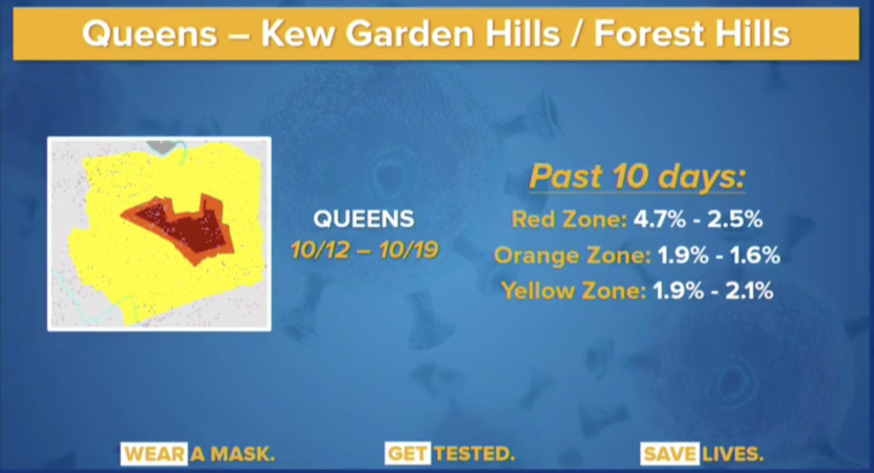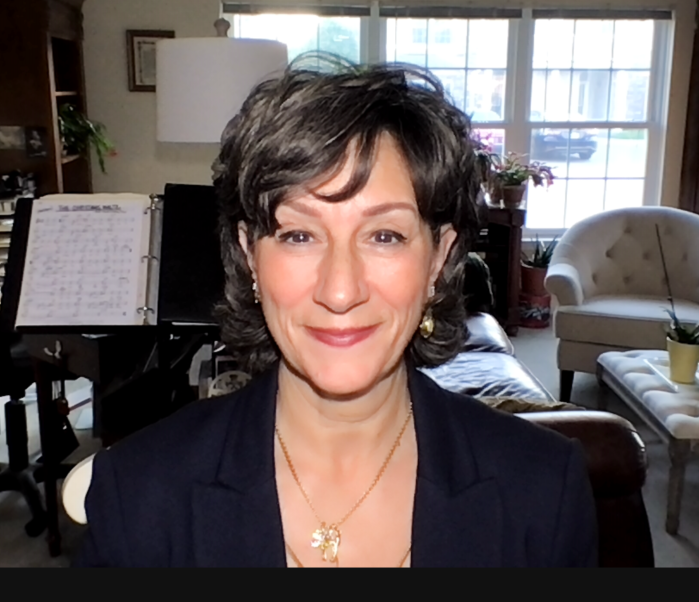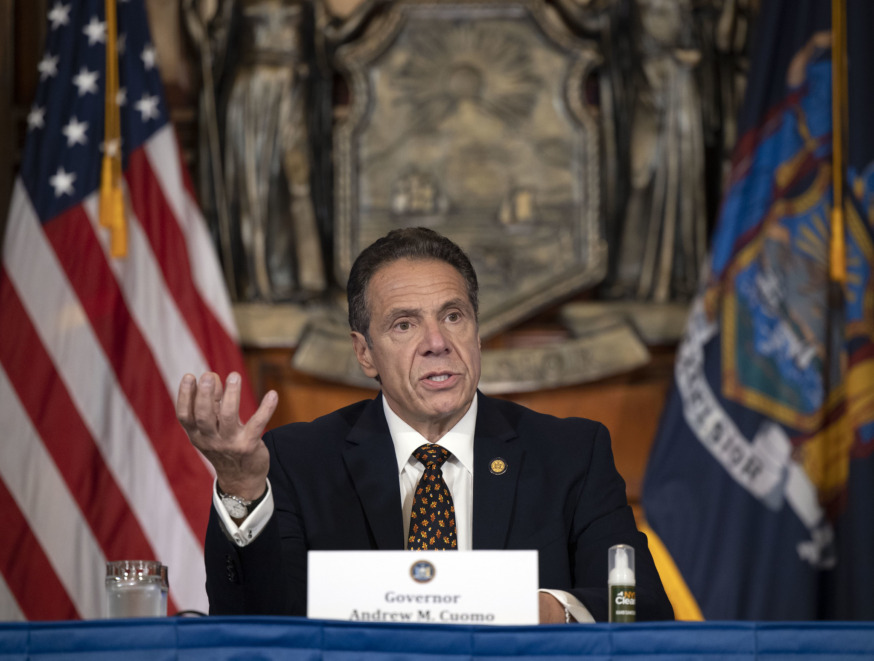
Governor Andrew Cuomo announced Wednesday that COVID-19 restrictions would be rolled back in two Queens clusters (Mike Groll/Office of Governor Andrew M. Cuomo)
Oct. 21, 2020 By Allie Griffin
Governor Andrew Cuomo announced today that COVID-19 restrictions in two Queens coronavirus hotspots will be eased as infection rates have come down.
The Central Queens and Far Rockaway red and orange zones have been downgraded to yellow zones — in which nonessential businesses and schools are permitted to reopen.
Businesses that had shuttered in the red zones on Oct. 8 can reopen as early as Thursday. Schools that were forced to close in red and orange zones can reopen Monday, secretary to the Governor Melissa DeRosa said in a Tweet.
“When we make progress, we adjust the targets,” Cuomo said during a Wednesday press briefing.
The neighborhoods of Kew Gardens, Kew Gardens Hills, Forest Hills and Rego Park that had been classified as red or orange zones–are now yellow.
The neighborhoods currently classified as yellow zones will remain yellow. In fact, the yellow zone has been expanded to include Ozone Park. Cuomo said that the neighborhood is seeing an uptick in cases.
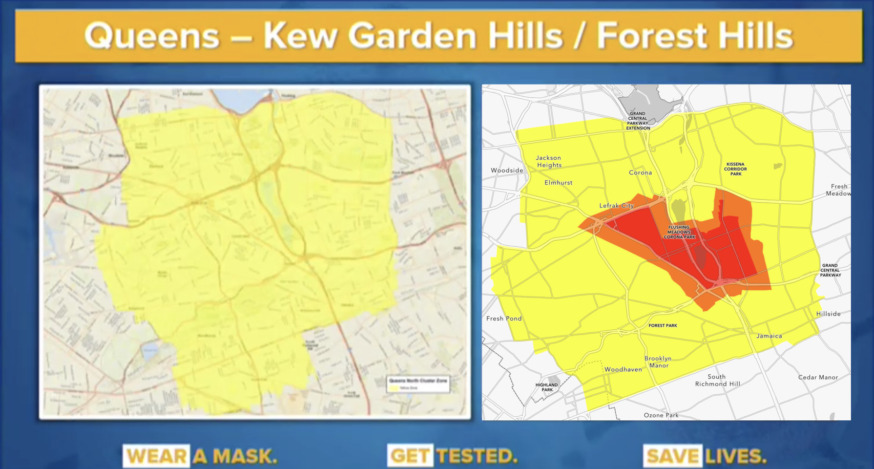
Central Queens cluster map with new zones on left and old zones on right
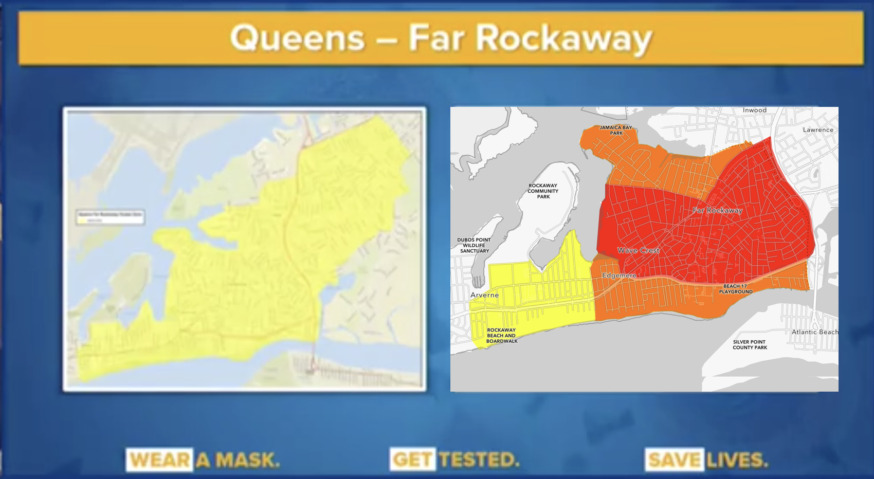
Far Rockaway cluster map with new zones on left and old zones on right
Cuomo said the harsh restrictions, such as closing nonessential businesses, and greater enforcement proved to work in lowering infection rates.
“If you increase enforcement the spread will go down,” he said.
But yellow zones still come restrictions–compared to the rest of the city.
Schools in yellow zones can open, but must perform mandatory weekly testing of in-person students and staff.
Yellow zone regulations also limit houses of worship to half their maximum capacity and mass gatherings to 25 people maximum — indoors or outdoors. While restrictive, the regulations are not as tough as red zones where houses of worship are limited to 25 percent capacity or orange zones where the limit is at 33 percent capacity.
Indoor and outdoor dining is also allowed in yellow zones, but restaurants can only seat up to four people at a table.
Cuomo introduced metrics Wednesday that are being used to determine how and when zones can be adjusted.
Areas can be removed from a red zone — where there are the highest restrictions — when the COVID-19 positivity rate is below 3 percent after 10 days.
They can exit an orange zone when that rate is under 2 percent after 10 days and they can exit a yellow zone when the rate is under 1.5 percent after 10 days.
The Central Queens red zone had a positivity rate of 2.5 percent over the past seven days, while the Far Rockaway red zone had a positivity rate of 1.8 percent over the past seven days.
“That’s real progress,” Cuomo said of the Far Rockaway rate in particular.
However, he warned that COVID-19 clusters will rise and fall throughout autumn as the weather gets colder and is more favorable to viral spread.
The statewide positivity rate has been an average of 1.2 percent over the last week. The rate is an uptick from recent numbers, but still among the lowest in the country.
